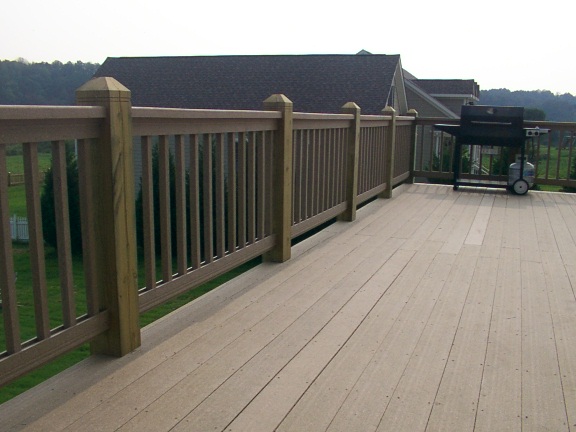Is Painting a Deck a Good Choice
![]()
The paint and primer, both water-based, have been peeling from my deck which is exposed to much heat, sun, and rain. After scraping all remaining paint and replacing rotten boards, I am ready to repaint. Is it better to use an oil-based primer than a water-based primer? If I use an oil-based primer, must I also use an oil-based paint, or can I use a water-based paint? Can you offer any advice on painting decks?
![]()
Decks constructed of treated lumber do not require painting to inhibit decay. It should however be protected with a penetrating sealer against harmful UV rays and excessive weathering from rain, snow and the freeze thaw cycle. I recommend not painting a deck, especially deck floors, to all my clients precisely because no oil or water based primer or paint will adhere to decking for many years without peeling. Additionally sand and dirt on the shoes of those walking on the deck abrade the paint enough to create wear patterns in high traffic areas of the deck.
If you are painting a deck to change the color consider using an oil based stain or stain and sealer in one. Unlike paint which mostly lays atop the wood, Oil based stains penetrate much deeper into the wood, drawing the coloring pigment down into the wood. Oil stains don’t peel and it takes much longer for wear patterns to develop. If the color ever fades or wears enough to require re-staining little prep work is required before additional stain is applied.
Oil based sealers work best with oil based stains. Because new treated wood is usually saturated with water, a new deck should be allowed to dry out for a few weeks after it is built. Once the surface is thoroughly dry it should be stained if desired and then sealed. For first time applications a stain and sealer in one is fine. All treated decks benefit from being re-sealed ever three to five years thereafter.
I am unsure if the previously painted wood on your deck will accept stain properly. If the wood pores are sealed with old paint the stain cannot penetrate into the wood properly. Test an old piece of wood or an inconspicuous area of the deck to determine if the stain is penetrating. Even if it does penetrate it may still stain to a different color than the newly replaced boards. It will be a judgement call on your part to determine if the shades between the old and new boards are a close enough match.
If an oil based stain in unsuitable or undesirable; re-coating with a latex stain or paint is about the only option left. Painting a deck with latex stain or paint will look great until it starts to flake and peel again. Using an oil based primer when painting a deck is unlikely to extend the life of the top coat and I certainly would not use an oil based paint for the top coat. A semi transparent latex stain might adhere slightly better than latex paint.
Rust-Olium, Restore; Behr, Deckover and Olympic, Rescue-It are three brands promoted as deck resurfacing products. My research and experience indicate that they may be viable for use on a covered porch or deck but I have no confidence that either of them would hold up well on an exposed deck and removing them would be much more difficult than removing paint.
Did you enjoy this post? Tell us what you think in the comments box below.
Want to see more?
Subscribe to our RSS feed or Subscribe by e-mail





